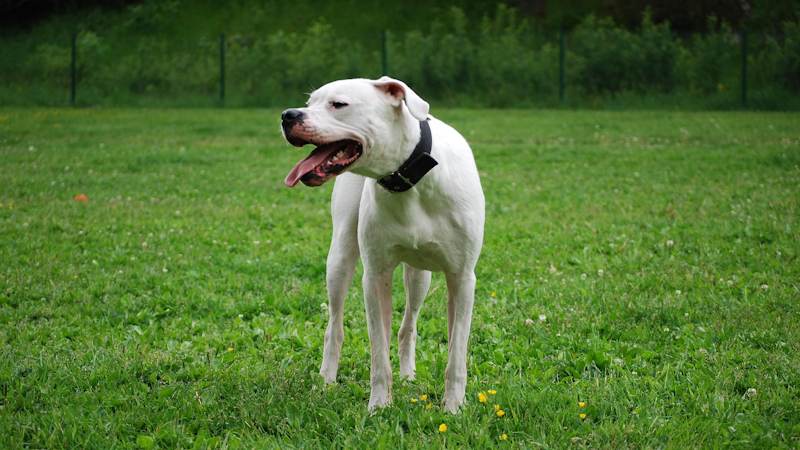
The Dogo Argentino is a striking blend of power, loyalty, and purpose. With its muscular frame and piercing gaze, this breed isn’t just built for looks—it’s built for action. Originally created for big-game hunting in Argentina, the Dogo has earned a reputation as a fearless protector and a loving family companion.
But don’t mistake its tough exterior for aggression—at its core, this is a deeply affectionate and intelligent dog. Whether you’re drawn to its athleticism or its steadfast devotion, the Dogo Argentino is a breed that demands attention—and rewards it with unmatched loyalty and heart.
Basic Characteristics of the Dogo Argentino Dog Breed
Before diving deeper into the Dogo Argentino’s history and personality, it helps to get a snapshot of what defines this powerful breed. From size and coat type to energy levels and temperament, these core traits give you a quick sense of what to expect when living with or considering this bold and loyal companion.
| Characteristic | Details |
| Breed Name: | Dogo Argentino |
| Origin: | Argentina |
| Breed Group: | Working / Guardian |
| Size: | Large |
| Height: | 24–27 inches (60–68 cm) |
| Weight: | 80–100 pounds (36–45 kg) |
| Coat Type: | Short, smooth |
| Coat Color: | Solid white (occasional black eye patch) |
| Lifespan: | 10–12 years |
| Temperament: | Loyal, protective, confident |
| Energy Level: | High |
| Exercise Needs: | Daily vigorous activity |
| Trainability: | Intelligent but needs firm, consistent training |
| Good with Children: | Yes, with supervision and early socialization |
| Good with Other Pets: | May be aggressive without proper socialization |
| Common Health Issues: | Deafness, hip dysplasia, skin allergies |
| Grooming Needs: | Low |
| Best Suited For: | Experienced, active owners |
Dogo Argentino Dog Breed: The History
The story of the Dogo Argentino begins in Argentina in the 1920s. Dr. Antonio Nores Martínez, a surgeon with a passion for dogs, set out to create a breed that could hunt big game in the rugged landscapes of his country. But he didn’t just want a hunter—he wanted a courageous dog that was loyal, intelligent, and stable enough to be a family companion.
To build the Dogo, Martínez started with the now-extinct Cordoba Fighting Dog, known for its tenacity and strength. He then crossed it with several other breeds—Boxer, Bull Terrier, Great Dane, Pointer, and even the Irish Wolfhound. Each added something important: tracking skill, stamina, size, and temperament.
By carefully selecting traits over generations, he created a dog capable of chasing wild boar and puma through harsh terrain, while still being calm and affectionate at home. The result was a breed with both grit and grace.
Over the decades, the Dogo Argentino gained recognition not just for its hunting prowess, but for its loyalty, versatility, and deep bond with its humans. It remains one of Argentina’s most respected canine achievements.
Dogo Argentino: Physical Characteristics and Size
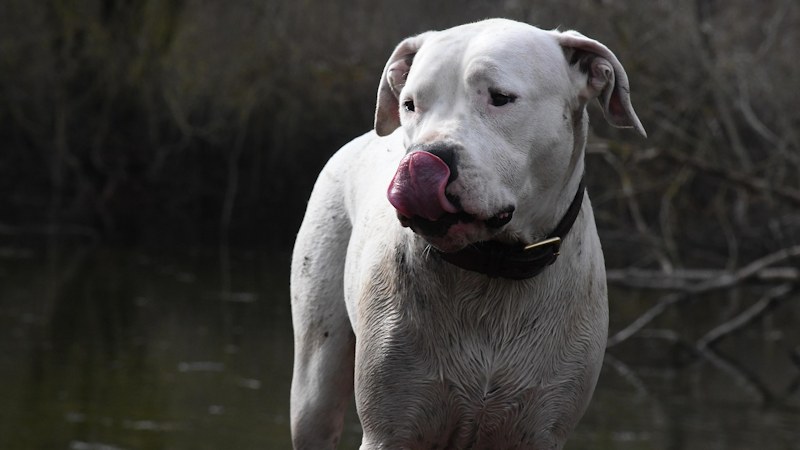
The Dogo Argentino is a muscular powerhouse built for performance. Everything about its appearance speaks to strength, speed, and stamina. This breed was designed to work—and it shows in every inch of its body.
Adult males typically stand between 24 to 27 inches at the shoulder, with females slightly shorter at 24 to 26 inches. Weight ranges from 80 to 100 pounds, depending on genetics and activity level. But it’s not just about numbers—it’s how those pounds are packed.
Their bodies are athletic, with broad chests, thick necks, and strong hindquarters built for explosive movement. The skin is tight over powerful muscles, and the frame is balanced—never bulky or clumsy.
Their head is large and well-defined, with a strong jaw and expressive dark eyes that show alertness. The ears are often cropped in countries where it’s permitted, though naturally they’re medium-sized and drop forward.
The coat is short, smooth, and always solid white. That white coat wasn’t for show—it helped hunters spot them in the field. Occasionally, you’ll see a small black patch near one eye, which is acceptable but not preferred in show rings.
Despite their size, their movement is fluid—almost catlike. This balance of power and agility is part of their charm.
Temperament and Personality
The Dogo Argentino doesn’t just stand out because of its size—it’s the personality that really leaves a mark. This dog is confident, alert, and intensely loyal. It’s not the kind of breed that fades into the background.
At home, Dogos form strong attachments to their people. They’re affectionate and often downright clingy with their family. If they had it their way, they’d follow you from room to room all day long. They don’t crave attention—they expect it.
Their protective instinct is hardwired. You don’t need to train them to guard the house—they do it naturally. But that fierce loyalty means early socialization is a must. Without it, they can become overly suspicious or territorial.
With kids, Dogos are surprisingly gentle. They seem to sense the need to tone things down. They’re playful and patient—but supervision is still important, especially due to their size.
Around strangers, they’re watchful. Not aggressive, but reserved. They won’t make instant friends at the dog park. Trust must be earned.
When it comes to other animals, the Dogo can be hit or miss. Their prey drive is high. Early and consistent socialization helps, but they may never be the type to live peacefully with cats or small pets.
Here’s what you can expect:
- Loyal to the core – They pick their people and stick with them
- Confident and assertive – Not fearful, not hesitant
- Protective but not reckless – They assess before acting
- Emotionally tuned-in – They read the room better than most
This is not a dog that tolerates neglect or boredom. Left alone too long, they’ll act out. But with purpose, structure, and your presence, the Dogo Argentino transforms into a calm, composed, and incredibly devoted companion.
Grooming Dogo Argentino Dogs
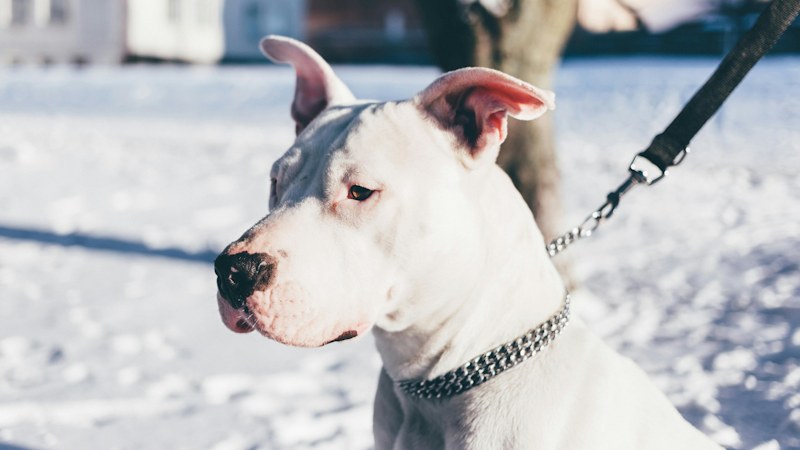
Grooming a Dogo Argentino is refreshingly simple—but don’t mistake “low-maintenance” for “no maintenance.” Their short coat and clean lines make upkeep easy, but regular care keeps them comfortable, clean, and looking their best.
The Dogo’s coat is short, smooth, and tightly fitted to the body. It doesn’t mat or tangle, and they’re not heavy shedders. But they do shed lightly year-round, with a slight uptick in spring and fall. A once-a-week brushing with a soft-bristle brush or rubber grooming mitt removes loose hairs and spreads natural oils through the coat.
Bathing isn’t needed often. Once every two to three months usually does the trick—unless your Dogo rolls in something unpleasant. Use a gentle, dog-safe shampoo to avoid drying out their skin. Their white coat shows dirt easily, so a damp cloth or unscented grooming wipe between baths can help keep them fresh.
Their ears require consistent attention. Whether cropped or natural, ears can collect debris. Clean them gently once a week using a vet-approved ear cleaner.
Their nails grow fast and thick. If you hear tapping on the floor, it’s time for a trim. Long nails aren’t just noisy—they’re painful over time.
Don’t forget dental care. Dogo Argentinos are prone to plaque buildup. Brush their teeth several times a week, or use dental chews designed to reduce tartar.
Here’s your quick grooming checklist:
- Brush coat weekly to reduce shedding and keep skin healthy
- Bathe every 2–3 months, or as needed
- Clean ears weekly to prevent infections
- Trim nails every 2–4 weeks depending on growth
- Brush teeth 2–3 times per week or more if possible
Routine grooming isn’t just about appearance—it’s a bonding opportunity. Most Dogos enjoy the attention if introduced to grooming early. It becomes a moment of connection, calm, and trust. Keep sessions short and positive. Make it a habit, not a hassle.
Training Needs of a Dogo Argentino
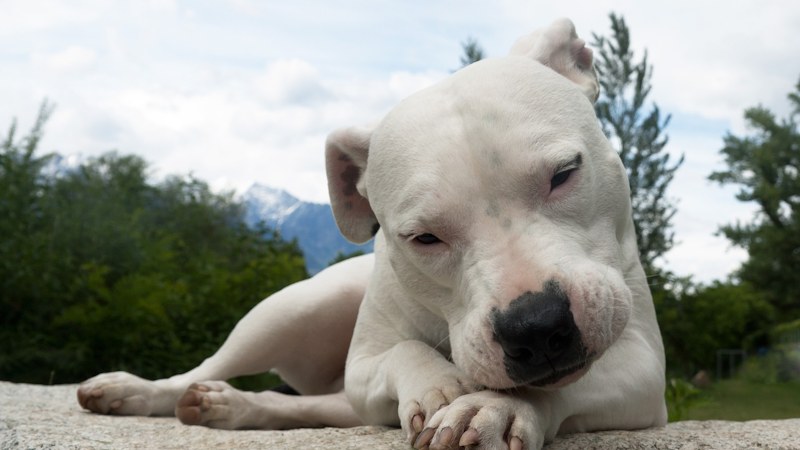
Training a Dogo Argentino isn’t something you start later—it’s something you begin the day they walk through your door. These dogs are intelligent, powerful, and naturally dominant. If you don’t lead, they will.
This breed craves structure. They want to know what’s expected. Without clear guidance, they get creative—and that’s where trouble begins. They’ll guard what they shouldn’t. Bark when silence is golden. Pull when they should heel.
The good news? They’re smart. Like, really smart. They pick up commands quickly. But they don’t just want to follow—they want to understand why they’re doing it. That means you need to stay sharp, too.
Start with basic obedience: sit, stay, come, heel. Keep sessions short and focused—10 to 15 minutes at a time. They respond best to positive reinforcement. Harsh corrections? That just makes them shut down.
Consistency is the key. Every member of the household needs to follow the same rules. If you let them on the couch and someone else doesn’t, confusion sets in fast.
Socialization is equally important. The earlier, the better. Introduce them to new people, other dogs, traffic sounds, unfamiliar places. Controlled exposure builds confidence and lowers the chance of fear-based aggression later on.
Here’s what you should focus on:
- Daily obedience work—repetition builds trust and understanding
- Exposure to new environments—so they stay calm under pressure
- Firm boundaries—this breed respects leadership, not leniency
- Mental stimulation—use puzzle feeders, scent games, or task-based training
These dogs were bred to work. They enjoy having a job, even if that “job” is walking politely on a leash or guarding the home from the living room window.
Be calm. Be clear. Be in charge. You don’t need to be harsh—you just need to mean what you say.
Training isn’t a sprint with this breed—it’s a lifelong relationship. If you show up consistently, with patience and fairness, the Dogo Argentino will meet you halfway every time. And when they do, you’ll have more than just a well-behaved dog. You’ll have a partner who trusts you completely.
Health Concerns and Issues
The Dogo Argentino is a strong and athletic breed—but that doesn’t mean it’s free from health risks. Like all dogs, this breed has a few genetic vulnerabilities worth knowing.
Deafness is one of the most common concerns. Because of their white coat and pigmentation patterns, many Dogos are born deaf in one or both ears. This condition is known as congenital deafness. Puppies should be tested using the BAER (Brainstem Auditory Evoked Response) test by a veterinarian.
Hip dysplasia is another potential issue. This condition affects the hip joint, leading to pain, limping, and eventually arthritis. While it can be managed with care and medication, it’s best to catch it early. Responsible breeders screen for it.
Other health concerns include:
- Hypothyroidism – A hormonal imbalance that can cause weight gain, hair loss, and lethargy.
- Skin allergies – Often triggered by food, environmental factors, or even certain fabrics.
- Autoimmune conditions – Rare but serious, involving the immune system attacking healthy tissue.
These issues aren’t guaranteed, but they’re part of the breed’s medical landscape.
Routine checkups matter. Annual vet visits, blood tests, and early diagnostics can catch problems before they grow. Keeping your Dogo at a healthy weight and active also reduces stress on joints and organs.
Always ask for health clearances if you’re getting your dog from a breeder. Prevention starts with good breeding practices and informed ownership. Being proactive gives your Dogo the best shot at a long, healthy life.
Nutrition and Feeding
Feeding a Dogo Argentino isn’t just about filling the bowl. It’s about fueling a high-performance body. These dogs are muscular, energetic, and always on the move—they need quality nutrition to match.
Start with a protein-rich diet. Look for meat as the first ingredient. Chicken, beef, lamb, or fish-based formulas work well. Avoid foods packed with fillers like corn or by-products—they don’t support lean muscle.
Puppies have different needs than adults. Use a large-breed puppy formula until they’re fully grown. It helps control bone development and reduces the risk of joint problems later in life.
For adults, choose food based on activity level. Working Dogos or highly active companions may need a higher calorie count. Couch potatoes? Keep it moderate.
Don’t free-feed. Split meals into two daily servings. This helps prevent bloating, a dangerous condition in large breeds.
Here’s what supports long-term health:
- Omega-3 fatty acids – Reduce inflammation and support skin health
- Glucosamine and chondroitin – Promote joint strength, especially as they age
Watch their weight. Even a few extra pounds put stress on joints and reduce lifespan. Keep treats minimal and avoid table scraps.
Water should always be fresh and available. Hydration supports digestion, muscle function, and temperature regulation.
Talk to your vet before switching foods or adding supplements. What works for one Dogo might not work for another. Balanced nutrition is the foundation of a strong, healthy dog.
Lifespan and Welfare of the Dogo Argentino Dog
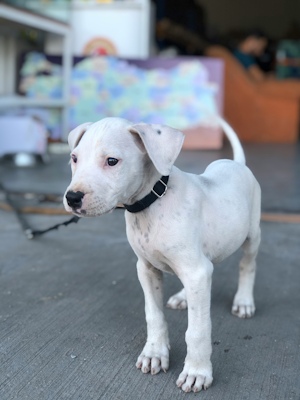
The Dogo Argentino has a typical lifespan of 10 to 12 years, which is solid for a large, athletic breed. But a number alone doesn’t tell the whole story. What really matters is how well those years are lived.
Welfare isn’t just about vet visits. It’s about the total environment—physical, emotional, and mental. These dogs thrive when they feel secure, engaged, and physically challenged. They don’t do well in isolated yards or homes where people are gone all day. They need connection.
Exercise plays a big role in their long-term health. A quick walk around the block won’t cut it. They need daily activity—brisk walks, running, structured play, or training exercises. Without it, they grow frustrated, anxious, or even aggressive.
Mental stimulation is just as important. Boredom is the enemy. Puzzle toys, obedience drills, or scent work can keep their minds active and their behavior in check.
Nutrition, grooming, and routine health care also shape their well-being. Keeping them lean reduces joint strain. Regular dental care prevents infection. Brushing their coat improves skin health and gives you a chance to spot issues early.
Emotional welfare matters, too. The Dogo Argentino bonds deeply. Harsh treatment breaks trust. Gentle leadership builds it.
Here’s what supports a long, healthy life:
- Daily physical exercise
- Mental challenges and training
- Consistent social interaction
- Preventive vet care
This breed isn’t built to sit on the sidelines. They need purpose. They need attention. And when their physical and emotional needs are met, they repay it tenfold—with loyalty, protection, and years of unforgettable companionship.
What Makes Special the Dogo Argentino Dog Breed
What sets the Dogo Argentino apart isn’t just its physical strength—it’s the rare balance of intensity and devotion. This dog carries the boldness of a fearless hunter and the sensitivity of a devoted family companion. It can track and take down wild boar, yet gently rest its head on your lap at the end of the day. That duality is rare.
There’s also a quiet intelligence behind those dark, focused eyes. The Dogo doesn’t act without thought. It watches, reads the room, and responds with purpose. Around strangers, it’s alert and calm—not jumpy or aggressive. Around loved ones, it’s affectionate, playful, and loyal to the core.
Few breeds match this level of emotional connection. The Dogo doesn’t just live in your house—it invests in your life. It thrives on routine, respect, and love. And in return, it gives everything. There’s no halfway with a Dogo Argentino. When they choose you, they’re all in—for life.
Summary
The Dogo Argentino is not your average dog—it’s a bold, intelligent, and deeply devoted companion built for both power and purpose. Originally bred to hunt wild game, this breed has evolved into a loyal protector and an affectionate family member. It’s a dog that commands respect, not just because of its strength, but because of its presence.
Living with a Dogo means committing to structure, leadership, and daily interaction. It’s not a breed you can neglect or underestimate. They crave physical activity, mental stimulation, and close bonds with their people. If those needs go unmet, they won’t sit quietly—they’ll act out.
But when their needs are met? You get one of the most loyal dogs on the planet. A partner that watches your back, makes you laugh, and guards your home with silent determination.
This isn’t a dog for everyone. But for the right owner—confident, committed, and present—the Dogo Argentino offers something few breeds can match: unwavering loyalty wrapped in muscle, heart, and soul.